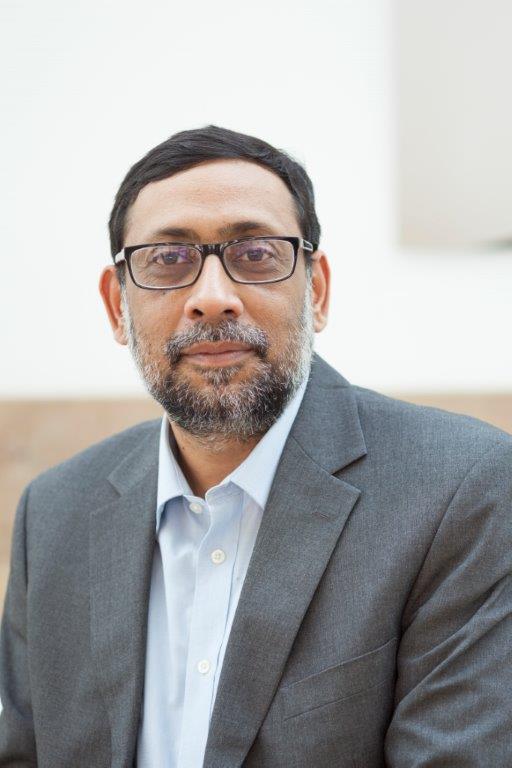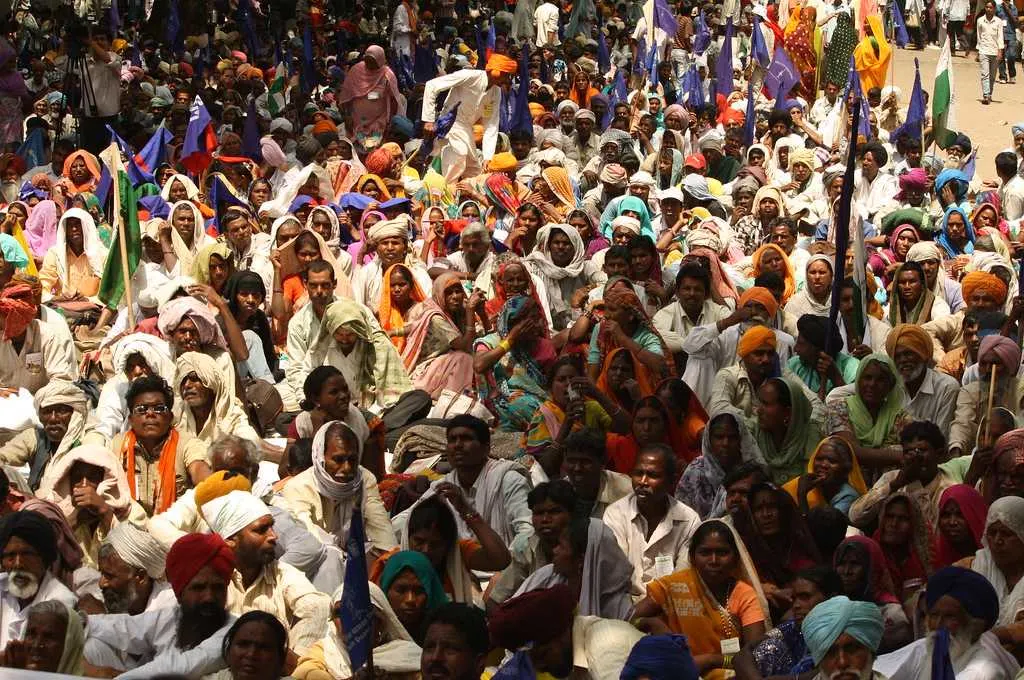Nonprofits play a vital role in searching for and implementing development interventions that can have positive impact. Donors in turn need to play a crucial role in ensuring these initiatives receive the necessary support. For nonprofits to be creative, donors need to be flexible, accommodating, and encouraging.
For nonprofits to be creative, donors need to be flexible, accommodating, and encouraging.
Often, donors approach nonprofits with a set agenda, a pre-designed methodology, and a ready log frame, at the beginning of a partnership. However by doing this, we risk making the role of the nonprofit that of just an implementation partner, instead of a creative arm.
Having worked on both the nonprofit and funder side of such partnerships, I believe that as donors, we must recognise that our nonprofit partners are the most important player in the partnership. Through our work at Paul Hamlyn Foundation (PHF), we have learned a few important lessons about what this kind of approach to grant making can achieve, for the nonprofit organisation, and for the relationship.
Here’s what we first need to understand about nonprofits
By virtue of living and working with communities, nonprofits have a much better understanding of what the ground reality is like for them. As a result, they know how best to prioritise needs and find immediate solutions to pressing problems. Additionally, being present at a local level allows them to play a pivotal role in flagging issues of local importance being overlooked by larger policy decisions, and help raise a voice in favour of people who are vulnerable.
What’s more, while it is unlikely that an international donor will remain in one location, with one project after their programme cycle is complete, a local organisation will remain connected to the people and their issues—some of which, like livelihoods and sustainability, for example—require long term engagement and investments.
Lastly, many nonprofits, including most of the ones in our portfolio have people from the communities as members of their board, core group, or staff. This allows for an unmatched level of insight into what the communities need, and how the programme is serving those needs.

As donors, we must recognise that our nonprofit partners are the most important player in the partnership. | Photo courtesy: Pexels
Make your nonprofit partner a priority at every step
Our approach at PHF is a ‘light touch’ one and includes a combination of fixed, law-abiding statutory requirements, and support as and when requested. But most importantly it is based on a feeling of mutual trust between us and our nonprofit partners. Here are some of the processes that have helped us, and might prove useful for other funding organisations.
Applications are sourced online through the PHF website. In the interest of transparency, our website outlines the India Programme Strategy. We require organisations to clear a short eligibility quiz, following which they need to upload their basic concept note in response to a set of questions. We do not actively seek proposals. Our application portal is always open, and anybody who is eligible can apply online. We review proposals twice a year, and we are sector agnostic in the organisations we choose to fund. This allows us to streamline the process, and give any organisation, no matter how small, the opportunity to be considered for a grant. And, our team doesn’t serve as a bottleneck.
Related article: The balance of power needs to change
Like other foundations, PHF does a thorough check of all statutory requirements. In addition to this, before we take on a nonprofit partner, we ask them to submit a self-authorised statement on the systems and procedures they are following on organisation management.
A PHF partnership can go up to a maximum of seven years. This is typically over three phases, two years at the start, three in the second phase, and two in the final consolidation phase. We do not expect partners to raise parallel resources for the project, though any such addition is welcome.
Also, in year two of our partnership we facilitate a support audit for the organisation. Though the audit is conducted like any statutory one, it is meant to help the organisation review and reassess its own accounting, financial, and governance systems. A formal report is prepared, and the organisation is expected to comply with the recommendations that are made.
Since many of the organisations we fund are small, we don’t stipulate a percentage of what PHF funding should be vis-à-vis the organisation’s annual outlay. However, we tend not to fund more than three times the annual outlay of an organisation. Having said that, it’s important to note that PHF grants are as far as possible custom designed to suit the idea presented by the organisation, which include the budgets, the percentage of organisation costs, the grant duration, what the funding goes towards, and so on.
We try to maintain a flexible approach to nonprofit reporting. While our nonprofit partners are required to submit a six-monthly narrative and financial report, this can be done in a format of their choice.
We have encouraged some of our smaller partners who have had trouble writing reports to submit them orally, captured on video.
For example, we have encouraged some of our smaller partners who have had trouble writing reports to submit them orally, captured on video. We also assist partners in tracking expenses and utilisation, as well as in coming together as a team and reviewing progress, failures, and ‘stuck-up’ areas.
This is done because while a report is necessary for PHF to release the next instalment of the grant, we hope that it can go beyond that. We see the report as something that emerges from a six-monthly process of reflection by the people involved with the project. The financial report in conjunction, connects the dots and helps give a picture of the real time stage of the project.
A PHF grant budget is split into three main groups: salaries, programme, and overheads. We believe that salaries paid to staff members should be fair and reflect the work they are doing. Therefore we do not insist on capping salaries expenditure at a fixed percentage of programme expenditure. When it comes to changes in budget allocations among line items, we are open to them as long as we have clear justifications for the same, which have to be discussed and shared with us in the report. We are not too sticky about changes in line items—except that we don’t allow for programme money to be used for salaries, or vice versa.
We make occasional visits (a minimum of one per year) to our partners that are scheduled based on a need felt either by our nonprofit partner, or by us. The visits are a combination of understanding what has happened at the community level through direct interactions with them, and also to spend time with the organisation’s team, understand their work, successes, dilemmas, and challenges in the project’s implementation.
Accountability of the consultant is towards the partner and not to PHF.
Additionally, at the end of the fourth year the partner and PHF jointly identify a consultant to undertake a third-party review of the project so as to submit the report before the grant is considered for renewal at the end of the fifth year. This review is funded by the partner through a provision made in the grant amount just to ensure that the accountability of the consultant is towards the partner and not to PHF, and that the partner uses the review to understand the progress they have made.
Minimising the foundation’s operational costs
At PHF we believe that the cost of operations should be kept at a minimum. Thus we have two full time staff members—one who performs the functions of the programme head and one who performs the functions of the administrative head. These positions are based out of Delhi from a rented office.
In addition, we have four consultants who together give around 28 days a month and are guided by four advisors who together give about 48 days in a year. In undertaking an assessment of which organisations should get funding, we employ these consultants who take responsibility for due diligence and partnership management.
Consultants give anywhere between 6-12 days a month, they are not required to come to office, and schedule their visits to partner organisations themselves. Each of them has a specific regional area that they ‘look after’. Currently we have four consultants, and each of them handles around 18-24 grants. PHF currently has a portfolio of 72 nonprofit partners.
Related article: Why funders must invest in organisational capacity
It is important for us that our consultants come with extensive experience in the development sector, and mostly on the ‘other side’, ie, seeking funds. More importantly, each of them is currently also handling, supporting, or part of a small to mid-level nonprofit. Thus, when they are not engaged with PHF work, they are working directly with communities.
This ensures that the team is conscious about what it means to be raising funds, and are therefore able to empathise with prospective partners during the process of due diligence. It also allows them to provide practical advice to the organisation over the course of the grant.
We also organise training programmes for organisation heads and accounts managers on keeping up with the latest in accounting and financial management, and on understanding the statutory requirements and compliances that nonprofits have to follow. These are carried out by specialists in the field contracted for the purpose. Additionally, we are planning team development initiatives so that partners can build their teams up with professional advice.
Our entire approach is based on enhancing the capacities of the partner organisation in a manner that the change becomes intrinsic, allowing the organisation to evolve. As that happens, our role tends to change and eventually reduce.
A donor needs to ensure that it puts the creative potential of nonprofits at the centre of its strategy.
Nonprofits play a critical role in evolving the developmental agenda of a country. It is important for them to be creative, and sometimes radical as they search for pressing and persistent development concerns. A donor to such organisations needs to ensure that it puts the creative potential of nonprofits at the centre of its strategy. Our learning has emerged over the past 32 years of doing this work. Through a combination of streamlining our internal processes and ensuring a culture of trust and collaboration with our partners, we have been able to assist effective development action and do more with less. We hope our experience can offer solutions for other funders in this space.





